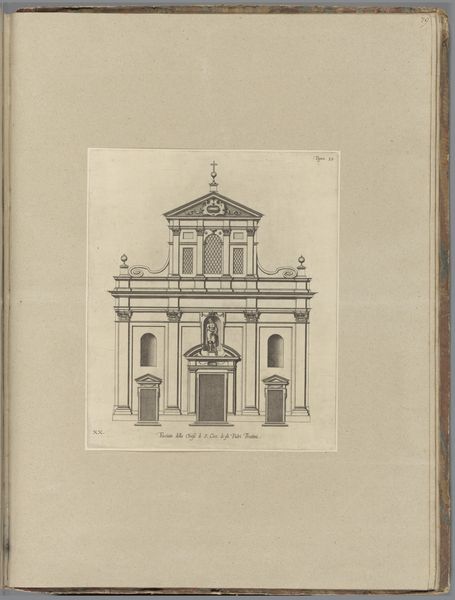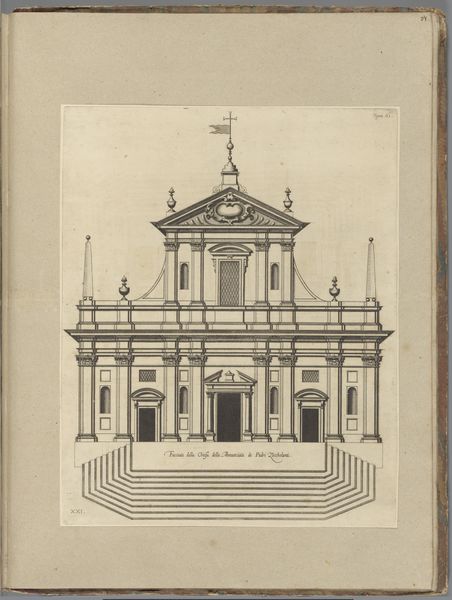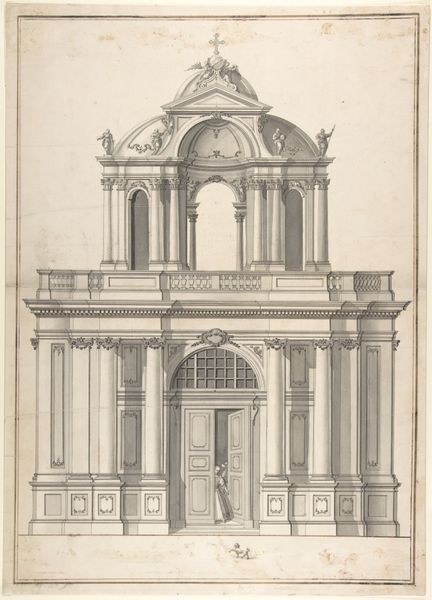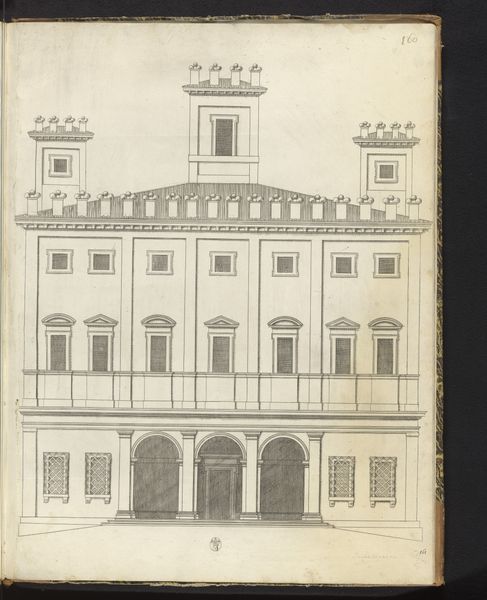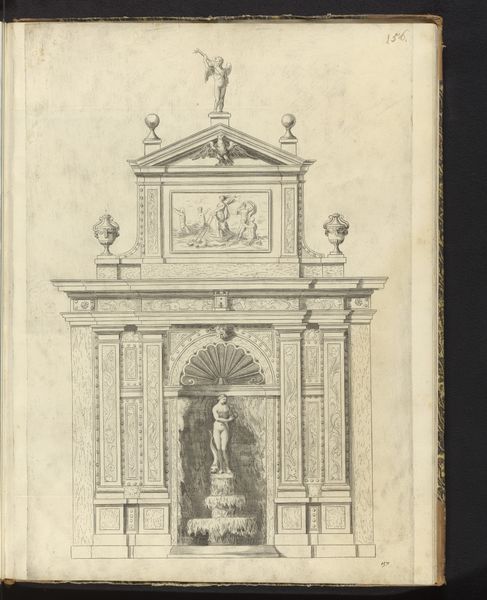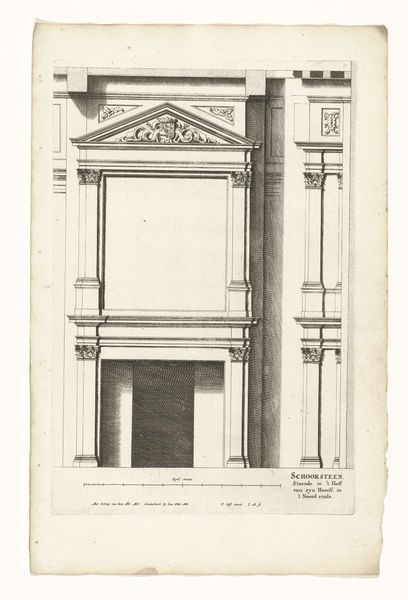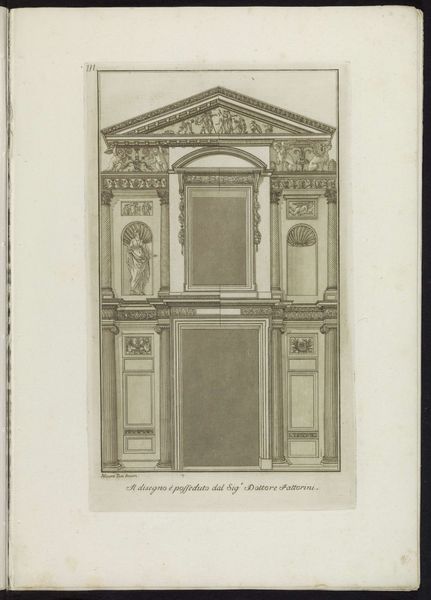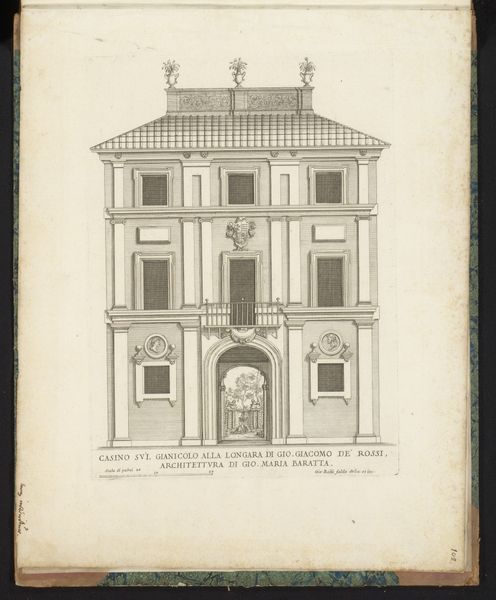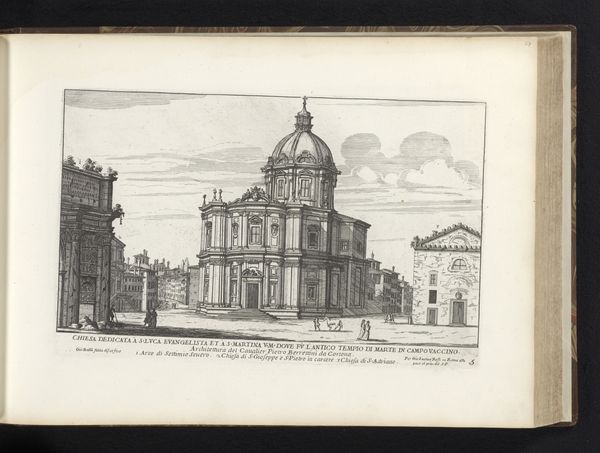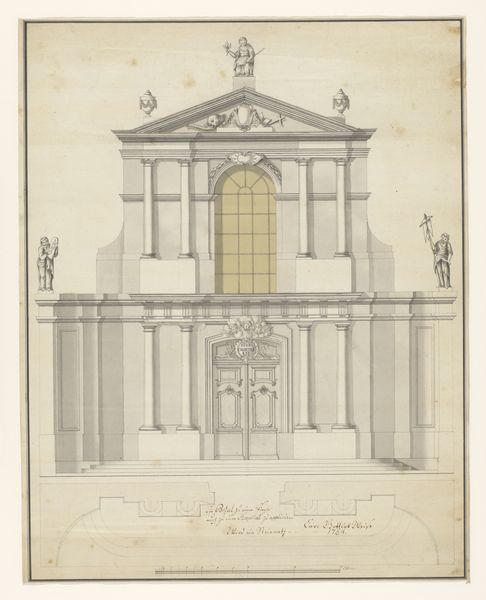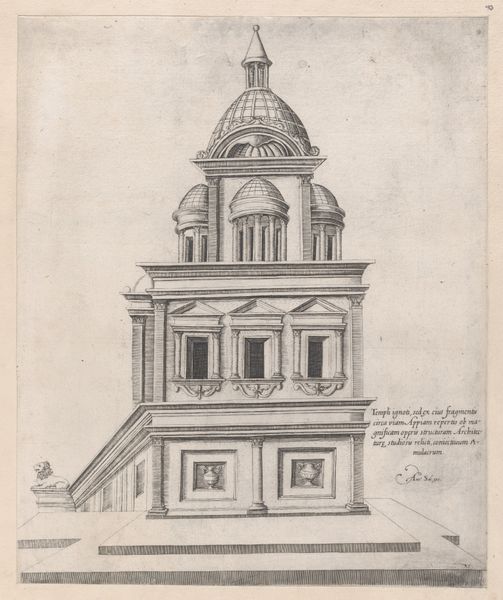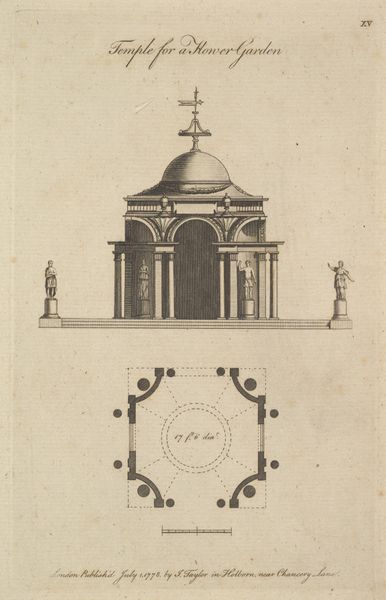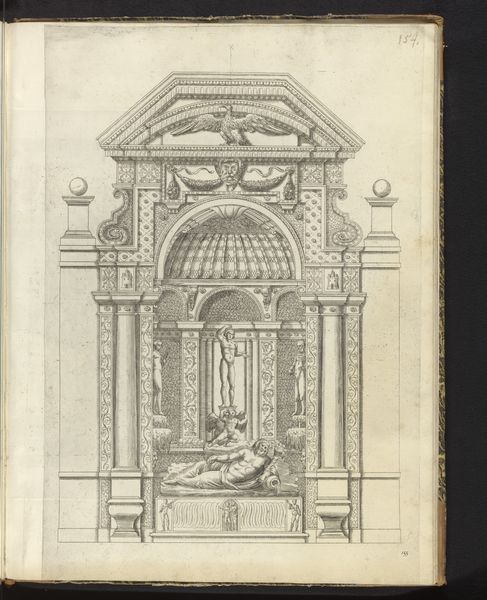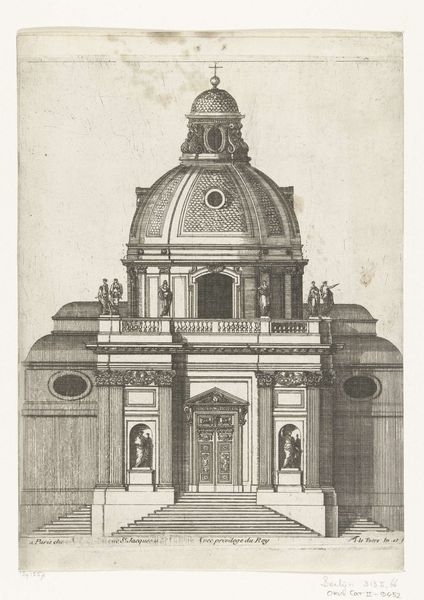
drawing, paper, ink, engraving, architecture
#
drawing
#
baroque
#
paper
#
ink
#
geometric
#
classicism
#
line
#
cityscape
#
engraving
#
architecture
Dimensions: height 473 mm, width 331 mm
Copyright: Rijks Museum: Open Domain
Curator: Look at this drawing by Claude Mellan, "Kerk van San Vincenzo te Bassano Romano," created between 1636 and 1647. What strikes you first? Editor: The meticulous detail, certainly. It feels very structured, very… ordered. Almost austere. It speaks of a very precise intention in the artist's mind. Curator: Indeed. Mellan was celebrated for his use of line, particularly single, unbroken lines, although I believe this work employs more conventional engraving techniques using hatching and cross-hatching. The social context of the Baroque period emphasized grandeur and the Church’s authority. Notice the classical elements combined with that Baroque theatricality. It really embodies the Counter-Reformation ideals in its very design, doesn't it? Editor: Absolutely. There's a definite power statement being made, both structurally and through its inscription that claims Vincentius Iustinianus Josephus commissioned it. But how much of that so-called grandeur trickled down to the working people involved in physically constructing this edifice? Did their labor truly reflect divine aspiration or simply build capital for the Church? Curator: Those are essential questions. While this work on paper gives us insight into the design and intended form, one might reflect on the economic reality of creating a monumental structure such as the Basilica in question. It highlights labor but often obscures the workers' individual experiences and social strata, doesn't it? Editor: Exactly. And this is not merely an image; it's a cultural document representing political power. Even the choice of engraving itself. How does the medium support this portrayal of permanence, authority, even luxury? Is it, in effect, propagating a particular narrative that history so often celebrates unquestioningly? Curator: Certainly. And by investigating it's materials and means of production as you suggest, it gives an amazing context, not merely for its appearance, but also to analyze art’s position in a capitalist structure. I now can consider beyond surface details to think deeper about history in ways previously unacknowledged. Editor: Precisely. Acknowledging those omissions in order to understand its influence on those unwritten pages, and how we continue building our world in art’s shadows, or despite it. Curator: Indeed. Looking at this drawing has certainly provoked thoughts regarding labor and its impact upon how such imposing power dynamics may affect ordinary individuals in Baroque society. Editor: And for that, I feel we both understand this image far beyond its lines, curves and baroque intentions now. Thank you.
Comments
No comments
Be the first to comment and join the conversation on the ultimate creative platform.
